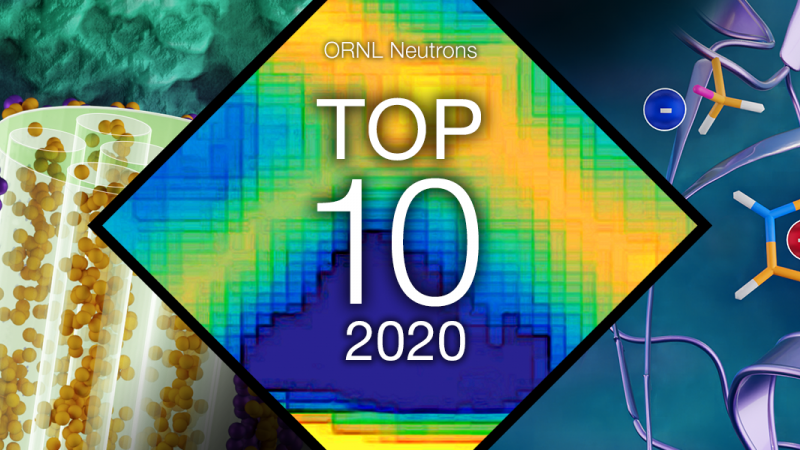The High Flux Isotope Reactor and the Spallation Neutron Source at the Department of Energy’s (DOE’s) Oak Ridge National Laboratory (ORNL) are two of the world’s most powerful neutron scattering research facilities.
Although the Covid-19 pandemic posed a number of significant challenges, 2020 was nonetheless a scientifically productive year for the Neutron Sciences Directorate (NScD) and its users. In response to the pandemic, NScD quickly established the Rapid Access program that provides researchers with an expedited proposal process for Covid-19-related research, and, as a precursor to fully remote experiments that began in 2021, launched the Remote Access Experiment platform that allows ORNL neutron staff to run experiments in coordination with offsite users.
The 2020 Top 10 list of scientific achievements includes impactful publications in the scientific journals Science and Nature and covers a diverse range of science topics from Covid-19 treatments and therapeutics, to lithium-ion batteries, high-performance alloys, energy-efficient industrial catalysts, and quantum phenomena underpinning next-generation electronics.
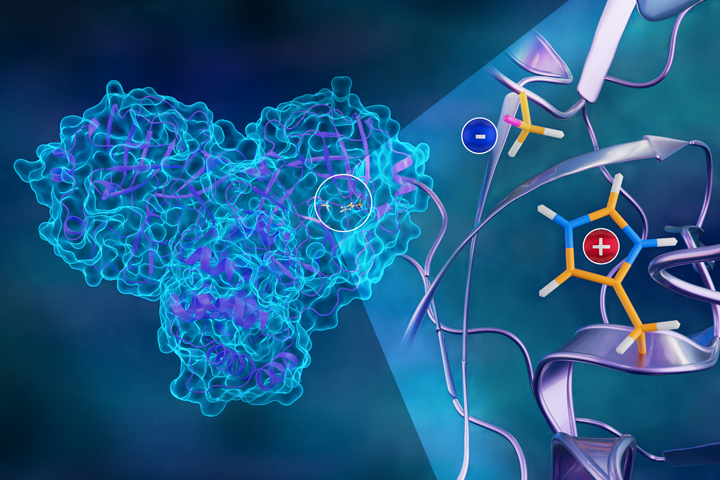 Mapping Hydrogen Atoms in SARS-CoV-2 Main Protease
Mapping Hydrogen Atoms in SARS-CoV-2 Main Protease
Journal of Biological Chemistry — To better understand how the novel coronavirus behaves and how it can be stopped, ORNL researchers built a three-dimensional map that reveals the location of every atom in the SARS-CoV-2 main protease, the enzyme that enables the virus to reproduce. A better understanding of the protease structure and how it behaves is critical to designing new drugs to combat Covid-19. +Read more
Work was performed using MaNDi, SNS BL-11B; and IMAGINE, HFIR CG-4D
 Cobalt-Titanium-Oxide Provides Model Material for Studying Topological Magnons
Cobalt-Titanium-Oxide Provides Model Material for Studying Topological Magnons
Physical Review X — The spectrum of magnetic excitations in a cobalt-titanium-oxide (CoTiO3) honeycomb material was shown to exhibit a Dirac cone, a quantum electron property famous in graphene. Neutron experiments established CoTiO3 as a simple model material ideal for studying topological magnons that may lead to useful applications for new spintronic technologies.
Work was performed using SEQUOIA, SNS -17
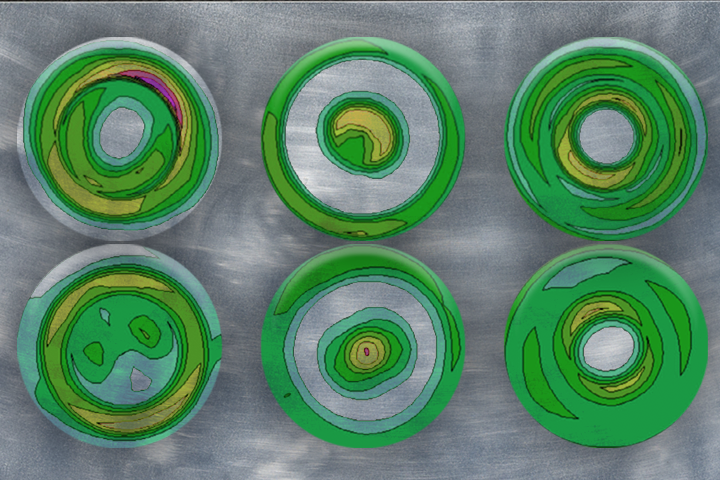 Illuminating Orientation Dependence of Deformation Damage in Al Alloys
Illuminating Orientation Dependence of Deformation Damage in Al Alloys
Acta Materialia — Neutrons revealed that during mechanical deformation, aluminum alloy grains oriented with stiffer directions parallel to the applied load accumulated more damage. Based on this detailed understanding of orientation dependence, manufacturing processes can be modified to produce improved structural materials through optimization of the crystallographic microstructure.
Work was performed using VULCAN, SNS BL-7
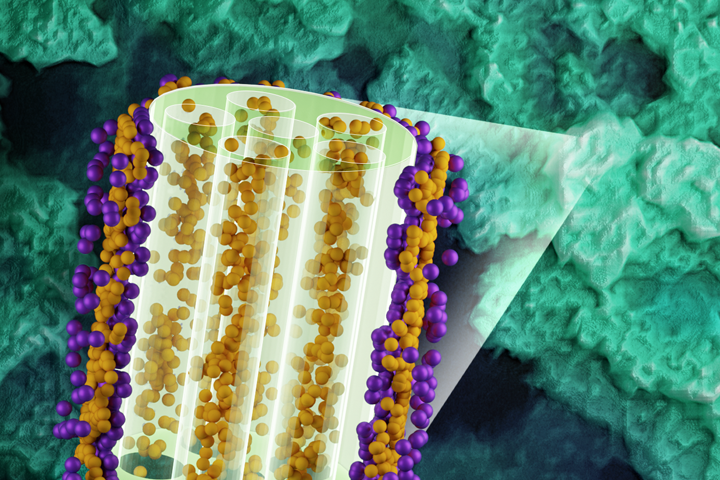 Ion Electrosorption in Metal–Organic Frameworks (MOFs)
Ion Electrosorption in Metal–Organic Frameworks (MOFs)
Angewandte Chemie — Neutrons were used to study energy storage and discharge in a new metal-organic framework (MOF) material with high electrical conductivity and energy capacity. The material, Ni3(HITP)2, has millions of pores capable of storing and releasing ions. The pores were found to capture specific ions when voltage is applied and exchange those ions with others when voltage polarity is reversed. Understanding the charge storage mechanisms in the MOF system shows the possibility of a new generation of highly efficient supercapacitors. +Read more
Work was performed using GP-SANS, HFIR CG-2
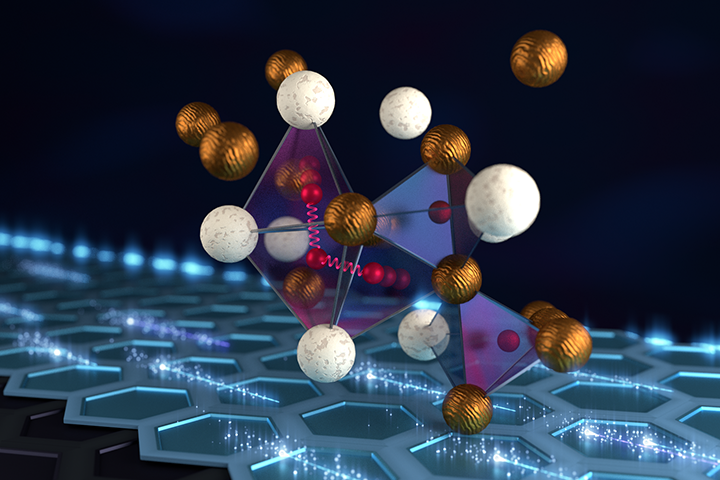 Closely Spaced Hydrogen Atoms Could Facilitate Superconductivity in Ambient Conditions
Closely Spaced Hydrogen Atoms Could Facilitate Superconductivity in Ambient Conditions
Proceedings of the National Academy of Sciences — Researchers discovered the hydrogen atoms in a metal hydride material are much more tightly spaced than had been predicted for decades—a feature that could possibly facilitate superconductivity at or near room temperature and pressure. Experiments used samples of zirconium vanadium hydride at atmospheric pressure and at temperatures from -450 degrees Fahrenheit (5 K) to as high as -10 degrees Fahrenheit (250 K)—much higher than the temperatures at which superconductivity is expected to occur in those conditions. +Read more
Work was performed using VISION, SNS BL-16B
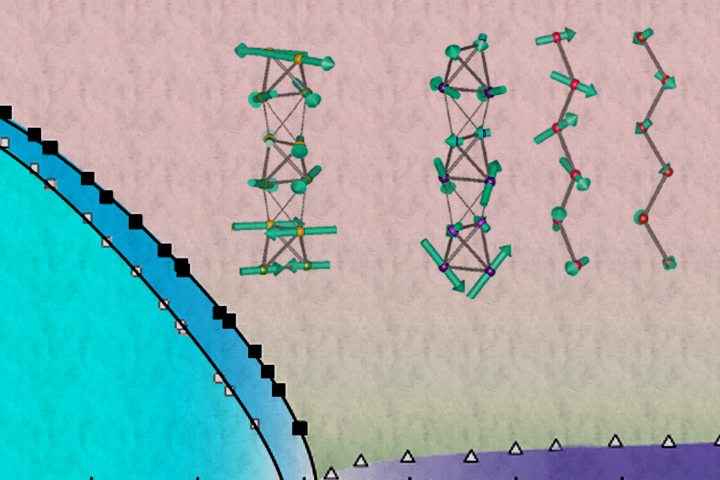 Harnessing Heavy Fermion Behavior in Frustrated Magnetic Materials
Harnessing Heavy Fermion Behavior in Frustrated Magnetic Materials
Physical Review Letters — An antiferromagnetic manganese-phosphorus material (Mn3P) with a complex helimagnetic structure was shown to exhibit heavy-fermion behavior near a pressure-induced quantum critical point. Heavy fermion materials have highly correlated electrons and are of great interest because of their potential insulating and superconducting properties. The Mn3P compound may prove to be a model material to better understand how to harness heavy-fermion behavior in novel frustrated quantum materials with d-electron spins.
Work was performed using CORELLI, SNS BL-9; and PTAX, HFIR HB-1
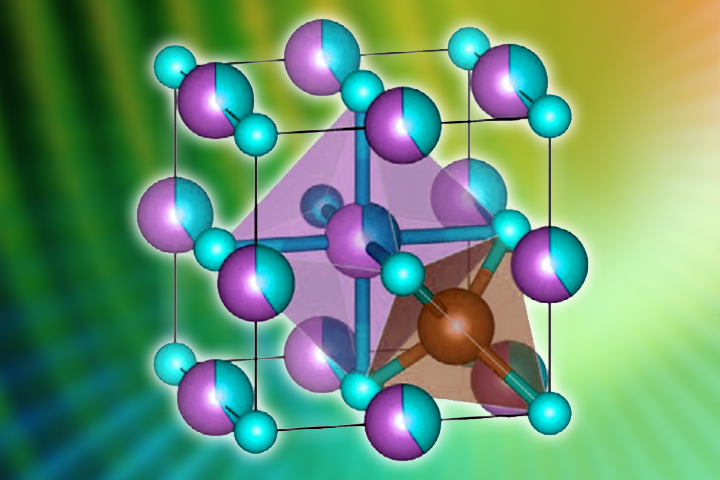 The Structure of a Fast-Charging Lithium Anode
The Structure of a Fast-Charging Lithium Anode
Nature — A newly discovered anode material, lithium vanadium oxide (Li3V2O5), a disordered rock salt, enables lithium-ion batteries to be safely recharged and discharged in just minutes. It could significantly reduce charging times for batteries, such as those in electric vehicles. The material reduces the likelihood of an internal short-circuit, a big concern in fast-charging conventional lithium batteries. The rock salt also yields higher cell voltages, can deliver over 40% of its capacity in just 20 seconds, and performs more than 1,000 charge/discharge cycles with negligible capacity decay.
Work was performed using VULCAN, SNS BL-7
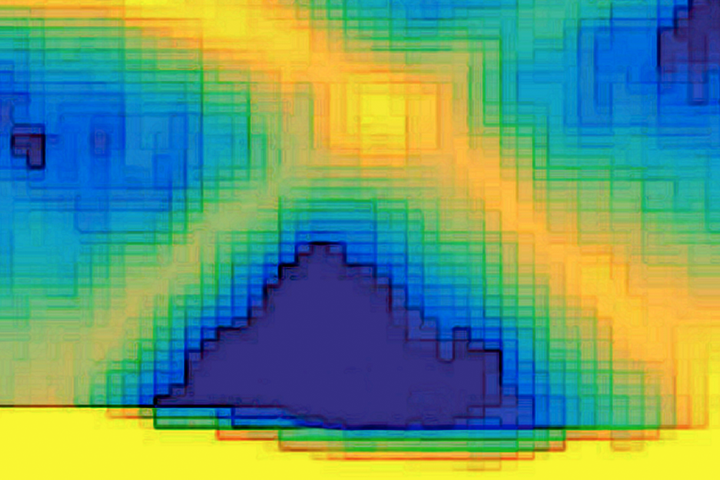 Mapping Energy Dispersions and Phase Transitions in Topical Photovoltaic Materials
Mapping Energy Dispersions and Phase Transitions in Topical Photovoltaic Materials
Nature Communications — Neutron scattering investigations into the energy conversion and thermal behavior in tin-sulfide (SnS) and tin-selenide (SnSe)—materials of great interest in solar cell and thermoelectric technologies—revealed drastic changes of the atomic vibrations in the materials, or phonon dispersions, as the materials’ structure expanded and contracted under varying degrees of temperature. A better understanding of how to control the underlying atomistic processes is key to improving many photovoltaic and thermoelectric renewable energy technologies.
Work was performed using TAX, HFIR HB-3; CTAX, HFIR CG-4C; and CNCS, SNS BL-5
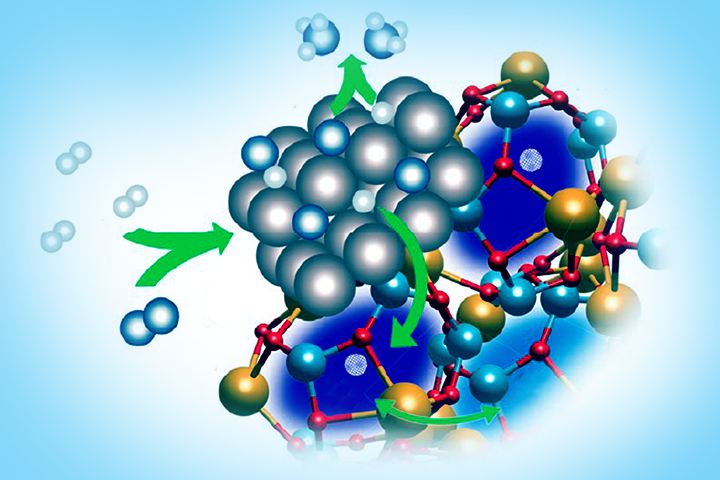 Novel Catalyst’s Surface Hydrogen Dominates Ammonia Synthesis
Novel Catalyst’s Surface Hydrogen Dominates Ammonia Synthesis
Journal of the American Chemical Society — Neutron scattering unveiled new insights into the performance of a novel metal catalyst used to convert nitrogen into ammonia. It was discovered that the hydrogen atoms on the material’s surface play the most significant role in synthesizing ammonia, instead of the atoms caged inside the catalyst. The novel catalyst—made of ruthenium, calcium, and aluminum—uses significantly less energy than more traditional iron-based catalysts that require high degrees of heat and pressure, and the material could lead to advances in more efficient production methods with increased quality goods at lower costs.
Work was performed using VISION, SNS BL-16B; and NOMAD, SNS BL-1B
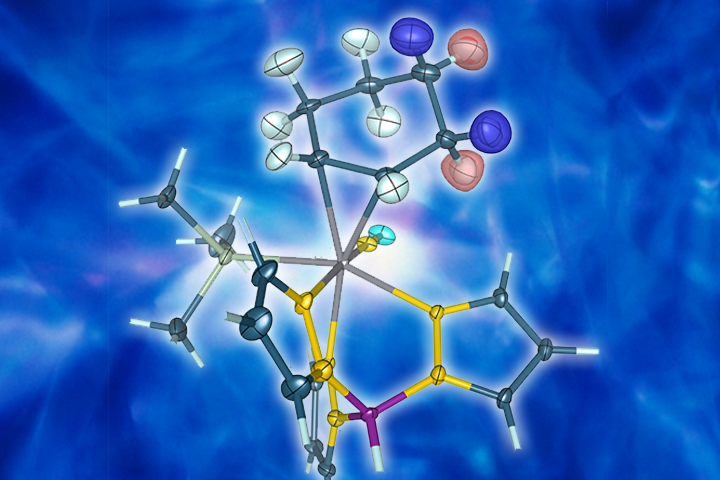 New Methodology for Benzene-Cyclohexene Hydrocarbon Conversion
New Methodology for Benzene-Cyclohexene Hydrocarbon Conversion
Nature — Neutrons helped determine that partially deuterated benzene can be converted to hydrocarbon cyclohexene via tungsten binding, enabling precise control over the positions of the deuterium atoms on the cyclohexene ring. The method opens new pathways for the preparation of new pharmacologically active compounds in which the strategic replacement of hydrogen with deuterium can improve the efficacy and safety of a drug.
Work was performed using TOPAZ, SNS BL-12
SNS and HFIR are DOE Office of Science User Facilities. UT-Battelle LLC manages ORNL for the DOE Office of Science. The Office of Science is the single largest supporter of basic research in the physical sciences and is working to address some of the most pressing challenges of our time. For more information, please visit www.energy.gov/science.—by Jeremy Rumsey


